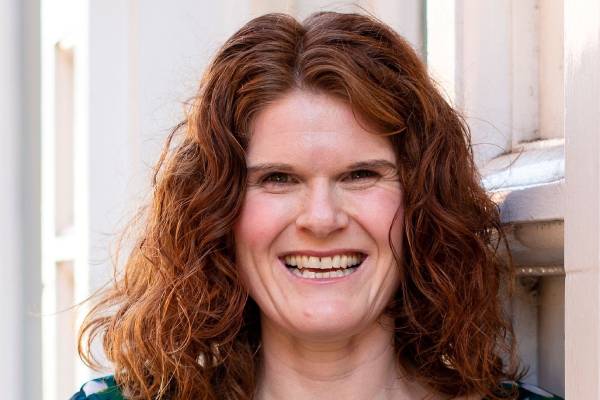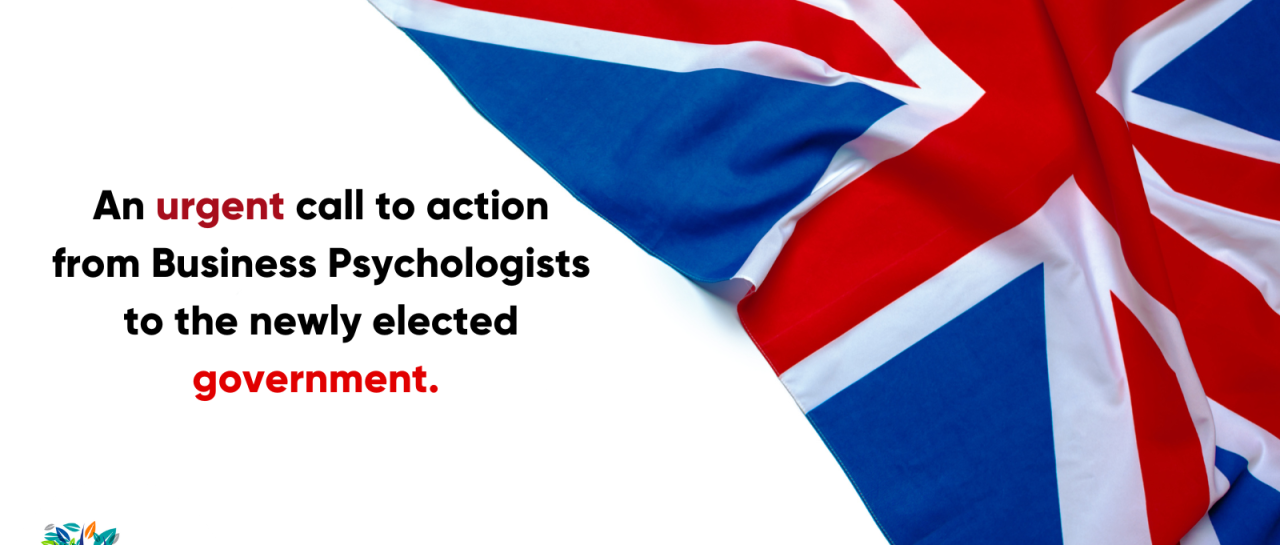Authored by Certified Business Psychologist Laura Howard. Certified Business Psychologist, Laura Howard, reflects on the webinar she recently delivered to ABP members. Below she outlines the main findings of her published research uncovering systematic barriers women face when being authentic as leaders. Importantly, she gives…

Confidence is neither Optimism nor Self-Esteem, but a combination of the way the brain encodes the results of already achieved success, and how this translates into determination to achieve further success, argued Professor Ian Robertson at the ABP February event. It is about how you value yourself, the extent to which you feel in control, and your ability to harness a feeling of empowerment of action. It is a link to the action systems of the brain which are particularly crucial. It is about a set of beliefs about your ability to deliver particular action.
Research into confidence dates back to the work of Albert Bandura of Stanford University in 1977, who proposed that “Efficacy expectations determine how much effort people will expend and how long they will persist in the face of obstacles and adverse experiences” He continues: “The stronger the perceived self-efficacy, the more active the efforts”. “People process, weigh, and integrate diverse sources of information concerning their capability, and they regulate their choice behaviour and ‘effort’ expenditure accordingly.” In practice, Bandura’s work draws a contrast between “Can Do”, which relates to efficacy expectations, and “Can Happen”, which are outcome expectations.
Drawing out the ideas behind this work, there are four states of the brain
• Apathy – can’t do, can’t happen. Driven by depressed lower levels of Dopamine, it is linked to the brain’s under-stimulated reward network
• Anger – can do , can’t happen, driven by too much noradrenaline, producing a sense of frustration because it won’t produce the desired outcome
• Anxiety – can’t do, can happen, where you have a vision of what you want to achieve but can’t see a way forward
• Activation – can do, can happen. Driven by higher levels of Dopamine, a reaction is triggered which is a motivator with anti-anxiety properties, again linked to the reward network. Not only is the brain motivated to take a course of action but it also expects that there will be a successful execution of that action. In addition, it encodes in the brain that success has already been achieved, laying the ground for the “exponential” success effect.
Confidence is therefore the result of the double whammy of achieving, and then the compounded effect of the boost of having achieved. Analysis of the function of the brain reveals that Confidence is associated with memory and motor related areas including bilateral Striatum and Hippocampus, whereas less confidence is associated with negative emotion and uncertainty, the Dorsomedial Prefrontal and Bilateral Orbitofrontal Cortex.
Where does confidence come from?
• Class / Wealth, and the safety nets which this assumes
• Gender
• Positive Stereotypes
• Success/ the Winner / exponential Effect (success is the greatest source of success)
• Culture/relationships (E.g. US, celebrating reward for success, vs Scotland, which has a negative view of wealth creation, which is seen to be won at the expense of others)
• Genetics – may be magnified by the exponential effect
• Adversity mastered
• Anxiety handled
• Sense of Control – confidence and control are like “twin sisters” (Critical because fear of lack of control can negatively affect emotions and therefore confidence)
How does it work?
There are several elements which contribute overall to building and maintenance of confidence:
• Mild delusion / overconfidence, that the outcome will be positive (e.g. basis of gambling industry). There is a gender effect: Men have more of a predisposition to this than Women
• Compound interest – the exponential effect of confidence.
• Anti Depression and anti Anxiety effects. Taking action reduces the anxiety and contributes to confidence
• Performance enhancement via boosted motivation
• Increased motivation, leading to increased perseverance
• Raised status associated with confidence. Unfortunately confidence has a disproportionately powerful effect over substance of argument, even where clarity of argument is overwhelming.
• Increased influence. Confidence generates and contributes to influence, which in turn further increases confidence
• Endows a feeling of control. As previously indicated, confidence and control are like “Twin Sisters”
Class
Studies on the Dopamine related anxiety reducing mood enhancing part of the brain has produced some interesting results: there has been found to be a (loosely) linear relationship between the “Striatal D2 receptor binding potential in the reward network”, linked to Class related behaviour, and a self assessment of the level of social status. The higher the social status, the higher the receptor potential.
Over confident exaggeration
• As part of a study (IZA Study , Institute of Labour economics, Germany) of international attainment across developed countries, students were asked to rank 16 mathematical concepts on a five point scale from “Never heard of it” to “know it well”. The researchers had smuggled in three non-existent concepts and used these to rank the percentage of respondents by English speaking nationality who had convinced themselves that the non-existent functions existed. The results of these tests show a strong correlation with levels of tendency to exaggerate. Just to remind ourselves, exaggeration, whether justified or not, can buy you influence and hence confidence. Canada and USA headed the list, with Scotland at the bottom.
• Further results from the same study showed that there is a much larger gender gap in the results in England than in other countries, with relatively little difference in Canada and the US.
• Further economic analysis of the same results by socio-economic status showed that again Scotland had the largest gap, with Canada and the US the smallest. Ian related his own experiences, growing up in Scotland in a deprived area and the relative lack of confidence of his neighbourhood, to the results of this study and the perceived gap related to socio-economic status.
• Analysis of immigrants also shows some interesting results, with hardly any perceptible difference between natives and immigrants in USA but largest in the three countries of the UK
• The results of self assessment of performance also produced some interesting results: Those with a tendency to exaggerate had a greater tendency to persist with a problem and do more than “what is expected of me”. In addition to these positive attributes, there are also negative ones: those with the tendency to exaggerate had greater self efficacy when it came to believing they could complete various tasks, and had an inflated view of their problem solving abilities.
Relationships
• Studies in monkeys compared “Dominant” with “Subordinate” and concluded that the Dominant members of the group had a greater tendency to take more food when they were housed together rather than individually whereas the subordinated showed a tendency to reduce their intake when grouped with others.
• A study of the results of social status against strength of socially supported networks showed also a (loosely) linear relationship with the strengths of networks increasing with social status (Martinez et al, Social Psychiatry study)
• A study in the Lancet into cognitive decline and increasing brain pathology in 70 and 80 year old humans up to death showed as expected increasing decline in brain activity, except in one group which demonstrated the positive effects of dense social networks in dramatically arresting cognitive decline.
Choice is preferable to No Choice
• This is true in both humans and animals
• Even if it involves greater energy expenditure than a no-choice situation
• Even if the outcome is the same as in the no-choice situation
• Choice is therefore in itself inherently rewarding and can in itself boost confidence. A choice can lead to a desired outcome, leading to “Perceived Control” which feeds back through a virtuous circle back to further choice.
Perceived control is determined by three functioning elements determined by Dopaminergic pathways in the brain:
• Affective, which elicits subjective value and approach behaviour (via the Stratum)
• Motivational, Motivational Salience to shape behaviour (via DA projections to corticostriatal circuits) and
• Protective, which buffers behavioural passivity in aversive environments (via regions such as the Ventromedial Prefrontal Cortex)
A study by Lachman and Weaver (1998) came to a remarkable conclusion about how Perception of Control (e.g. confidence) can compensate for poor levels of mental wellbeing associated with lower socio-economic status for many people. Differences in Depressive Symptoms can decrease and Life Satisfaction can increase to reduce the gap to almost zero.
Djankov et al (2016) undertook some research into happiness in populations in Eastern Europe, which concluded that people were in general no happier than they were when they were worse off under Soviet control, while at the same time recording no change in levels of happiness in old EU countries. The conclusion is that social networks are so strong in Eastern Europe that they act as a buffer between the effects of socio-economic status and wellbeing outcomes.
Finally, the concept of values should not be underestimated and their contribution to control and confidence. “Self affirmation” of values can have a considerable benefit: on the one hand there is increased reward processing (ventral striatum) when one’s behaviour is at one with values, and on the other, self-processing systems, (including the medial pre-frontal cortex) which confirms control associated with confidence. People are much less likely to respond to “ego-threat” defensively and take action commensurate with this diminished negative emotion, when they recognise themselves in their values mirror.
Conclusion
What can Business Psychologists do to apply these ideas and boost confidence in others?
Ian concluded his presentation with reference to the 8 “A”s of Learning Confidence, which all of us can apply during the course of our work, whatever the sphere:
• Attention/Detail/Words
• Action/Goals/Implementation
• Adversity
• Attitude to self
• Attitude to failure
• Aspiration/Fantasy
• Asking for reassurance
• Affirmation



